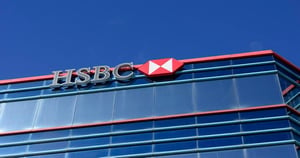Quiet recalibrations are often more revealing than bold moves. Over recent sessions, Asia’s equity landscape has begun tilting in ways that are drawing attention from increasingly discerning investors. What looks at first like routine momentum carries deeper signals of how capital is preparing for what lies ahead.
Several concurrent shifts are shaping the tone. First, the thaw in U.S.–Canada trade talks, triggered by Ottawa’s retreat from its controversial digital services tax, has lifted broader confidence around the global trade environment. Asian markets, deeply sensitive to macro trade dynamics, responded immediately. Futures tracking regional equities moved higher, mirroring modest gains in U.S. benchmarks. But it’s not the rally itself that stands out, it’s the quiet recalibration of risk appetite under way.
Much of this is occurring in the shadow of a wider macro balancing act. U.S. inflation and jobs data have created a plausible case for a July rate cut, with expectations now shifting in that direction. This has added pressure on the dollar, driving a subtle repricing across currency and bond markets. For Asian equities, the implications are material: a softer dollar often favours capital inflows and bolsters risk sentiment, particularly in emerging economies.
Investors in Japan and South Korea were among the first to respond. Benchmarks in both markets moved higher, benefiting from renewed global risk appetite. But beneath these surface moves lies a more complex story, particularly in Hong Kong, where mainland capital continues to reshape the market profile. Roughly US $90 billion has flowed into Hong Kong equities during the first half of the year, with a clear bias towards H-shares. The preference for these names over domestic A-shares suggests a valuation consciousness among mainland investors, who are now actively arbitraging between similar names listed across borders. Sectors benefiting most include banking and technology, areas delivering steady dividends with compelling price entry points.
Meanwhile in China, the latest PMI print of 49.7 confirmed that factory activity contracted again in June. That marks the third consecutive monthly decline, adding urgency to the case for further policy stimulus. While markets have not yet priced in aggressive fiscal action, anticipation is building. For investors positioned in sectors likely to benefit from domestic policy support, consumer infrastructure, real estate services, renewable equipment, this phase of economic softness could provide critical entry windows.
In commodities, oil prices edged lower on stable OPEC+ production and Middle East ceasefire dynamics. Gold retreated modestly as investors rotated towards risk assets. These moves, though minor, reflect a changing mix in investor preference as confidence slowly reasserts itself in equities.
Perhaps the most quietly powerful trend of the current cycle is the acceleration in deal-making. Global M\&A volumes climbed sharply in the first half, with Asia contributing over half a trillion dollars in completed transactions. Several large-cap acquisitions by Japanese and Chinese firms have signalled that strategic capital is reactivating. Notably, deals in excess of US $10 billion are becoming more common, reinforcing a narrative of scale over speculation. This surge in strategic M&A suggests a rising conviction in long-term positioning, particularly in sectors like semiconductors, clean energy, and financial platforms.
The common thread across these developments is not exuberance, but rather a strategic turn. Asian markets are being quietly repositioned by a combination of policy anticipation, trade normalisation, and disciplined capital allocation. Investors are not chasing trends, they are evaluating them against a backdrop of softening Western macro conditions and a gradually reawakening deal cycle.
In plain terms, the businesses driving these shifts are those with scale, cash flow stability, and regional relevance. Whether in Hong Kong banking, Japanese manufacturing, or South Korean tech, the attention is returning to fundamentals. For investors, the next phase in Asia won’t be about chasing momentum, it will be about anticipating where capital is being redeployed with intent.
Fidelity Asian Values Plc (LON:FAS) provides shareholders with a differentiated equity exposure to Asian Markets. Asia is the world’s fastest-growing economic region and the trust looks to capitalise on this by finding good businesses, run by good people and buying them at a good price.





































